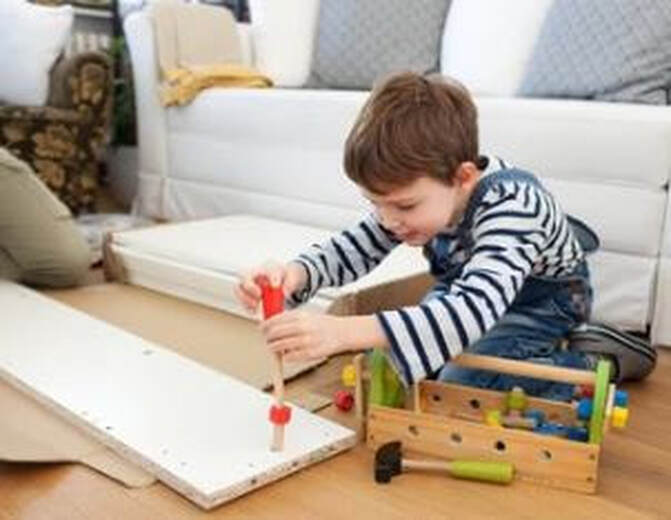Kids' Kampus
 Encouraging child exploration is beneficial for building the foundations of a child’s life, which is why creating a safe environment within the home is extremely important. Allow your child to learn, develop and play in a safe and sound environment by learning more about potential hazards, then preventing, and removing them. Not only is safety about supervising your child and creating a risk-free environment, but also teaching your child to understand what’s safe and what’s not. Read on to learn more about child safety within the home. Preparing your home As your child develops and learns to climb and open things, you’ll to look out for new potential hazards that you may not have noticed before you became a parent. Dangling cords, electrical power points, sharp furniture and poisonous household chemicals are just some of the everyday items that could seriously harm a child. Things to consider around the house: · Strangling/suffocation: ensure that your child is unable to reach anything that could potentially get caught around his/her neck, such as dangling cords, curtains, blinds, wall hangings or hanging mobiles. · Electrical safety: use power point protectors and safety plugs to ensure that your child can’t put anything in a powerpoint. · Poisoning: use child locks on any cupboard doors full of potentially harmful liquids and poisonous chemicals such as bleach. · Burns and scalds: prevent harmful situations by supervising your child, and keeping them away from hot surfaces, drinks, Food and baths. When running a bath for your child, either install a mixer tap pre-set to a safe temperature as the bath fills or, if running separate hot and cold taps simultaneously, ensure that the bathroom is a “No Zone” while the bath is filling. Many children have drowned and/or sustained serious burns by deciding, unknown to their parent, to get into the bath unsupervised, before the water temperature has been checked that it is safe. Hot tap water burns cause more deaths and hospitalization than burns from any other hot liquids in young children. Preventing falls The most common cause of injuries in children in New Zealand is falls. While the occasional fall is a huge part of growing up, one split-second accident could cause a seriously harmful injury. Learn how you can help prevent dangerous falls: · All furniture in the home should be ‘child proof’, sturdy, or anchored to the wall to prevent it tipping, falling or injuring your child. We also recommend padding or removing sharp edges e.g. the corners of a low glass or hardwood coffee table. · Install safety gates and child locks at the top and bottom of your stairs, as well as on entrances to balconies and outdoor areas. · Be sure to install security latches and locks on all windows to prevent your child from falling out when he/she starts climbing. Play equipment and toy safety Children should be able to have fun and enjoy their toys, however choosing suitable play equipment is vital to the safety of your child. When you purchase toys, consider the following: · Choose the right type of toys for your child’s age. Note that the younger or smaller the child, the larger the toy should be, to avoid them putting toys up their nose, in their ears or swallowing them. · Make sure you choose options with smooth edges. · Ensure that paints and filling used within each toy are non-toxic · We recommend opting for toys that allow your child to play imaginative and creative games such as toy phones, dress-up costumes, farm sets and kitchen sets. Here at Kids’ Kampus, we offer a warm, open and safe environment for your children to develop and grow. For more information, contact us on [email protected].
1 Comment
|
.Margie Blackwood, owner and Director of Kids' Kampus
April 2024
. |
|
Kids’ Kampus Childcare
50-52 Shackleton Road Mt Eden, Auckland 1024 New Zealand |
|






